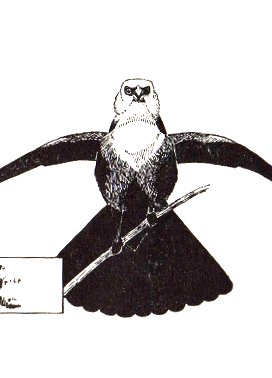The Left-handed Blackbird
What bird species always twists its head to the left when singing, never to the right?
When I came upon the claim in the scientific literature that singing male Yellow-headed Blackbirds always turn their heads to the left and never to the right, I immediately had to verify it for myself. Since the migratory Yellow-heads in my neighborhood have mostly skipped town, I went where the birds are always singing: YouTube.
As far as I can tell, the claim is correct. At least, I haven’t been able to find a video yet that disproves it. But let’s be exact: each male Yellow-head has two different kinds of advertising songs, and only one of them is accompanied by the leftward head-twist. Some researchers call these two song types the Accenting Song and the Buzzing Song.
| The Accenting Song (of short, somewhat musical notes): | is given in the Symmetrical Song Spread display posture: |
| The Buzzing Song (a marvelous yowl like a dying cat’s): | is given in the Asymmetrical Song Spread display posture (with the left wing raised and the head turned left): |
Some caveats apply, of course. The display postures illustrated above are typical of excited males. When the birds are less motivated, they may move their wings and head very little. But the fact remains that in the dozen or so YouTube videos that I watched, if the head moved at all during the Buzzing Song, it always went to the left.
This is not the only instance of “handedness” (what scientists call “chirality” or “laterality”) among birds. Parrots have been reported to be mostly left-handed; so has at least one individual Short-eared Owl (in a series of stunning photos). Preference for one foot or the other has also been reported in a few species of Central American finches.
It’s not just feet, wings, and heads that may be lateralized. Some birds show a preference for using one side of the syrinx when vocalizing. And a few birds have physical asymmetries: the New Zealand Wrybill has a bill that is always bent to the right. In the White-winged Crossbill, the lower mandible crosses to the right in approximately 75% of individuals. In its relative the Red Crossbill, however, the lower mandible crosses to the right in about half of birds, and to the left in the other half.
The authors of the parrot study go so far as to speculate that handedness may have originally evolved in species that, like parrots, have eyes on the side of their head — and so must choose a direction to turn each time they want to look at something dead ahead. Whatever the reason, this is an aspect of bird behavior that is easily observed and quantified — but usually ignored.
I know I’ll be paying more attention to the singing Yellow-headed Blackbirds when they come back north next spring!


One thought on “The Left-handed Blackbird”
Hello Nathan! I just found your site through the ABA blog, and I’m so excited to learn more about this aspect of birding! My fictional protagonist Bob White is an expert at birding by ear, and when I give book talks about the Bob White Birder Murder Mystery series, people are very interested in this skill. If you haven’t read one of the Birder Murders yet, my newest (5th) book is FREE on Kindle this week at http://www.amazon.com/dp/B009DOS2Y0. Please download your free copy and help me spread the word about this special promotion!
Comments are closed.